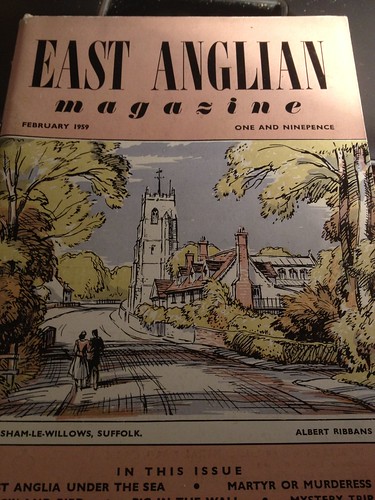Today marks the 60th anniversary of the East Coast Floods of 1953.
I lived in Snettisham on the Norfolk coast for 12 years, and on the evening of the 31st of January 1953, a storm surge hit the coast of Norfolk, having previously caused devastation in Lincolnshire, and moved around down into the Thames Estuary.
The wall of water was the result of a combination of a high tide, low pressure associated with a storm and winds which pushed the storm onto the coastline. There were many more temporary and wooden dwellings along the coast than there are now (many of these now have restrictions to prevent people living in them during the winter months)
On the 50th of anniversary, I went to an event in Snettisham Village Hall, where I met and chatted to a few people who were living in the village at the time, and shared their memories.
A total of 25 people died in Snettisham during the floods. Water inundated the areas inland from the beach: an area I have walked and cycled many times.
Further along the coast in Hunstanton, there was help from a number of the American servicemen who were posted in the area at nearby RAF Sculthorpe (ten minutes from where I live now) at the time. Several earned medals for their bravery, and some local people won them posthumously.
The Eastern Daily Press had a range of materials in its pages this week.

This included some useful reporting on the local area.
I lived in Snettisham on the Norfolk coast for 12 years, and on the evening of the 31st of January 1953, a storm surge hit the coast of Norfolk, having previously caused devastation in Lincolnshire, and moved around down into the Thames Estuary.
The wall of water was the result of a combination of a high tide, low pressure associated with a storm and winds which pushed the storm onto the coastline. There were many more temporary and wooden dwellings along the coast than there are now (many of these now have restrictions to prevent people living in them during the winter months)
On the 50th of anniversary, I went to an event in Snettisham Village Hall, where I met and chatted to a few people who were living in the village at the time, and shared their memories.
A total of 25 people died in Snettisham during the floods. Water inundated the areas inland from the beach: an area I have walked and cycled many times.
Further along the coast in Hunstanton, there was help from a number of the American servicemen who were posted in the area at nearby RAF Sculthorpe (ten minutes from where I live now) at the time. Several earned medals for their bravery, and some local people won them posthumously.
The Eastern Daily Press had a range of materials in its pages this week.

This included some useful reporting on the local area.
It was sometime before the final death toll for Norfolk and Suffolk was known. In the early stages, no-one really knew who was missing, who had died and who had escaped. In some cases it was months before all the bodies were recovered.
In Norfolk, exactly 100 people died – Hunstanton (32 – including 17 Americans), Snettisham (25), King’s Lynn (15), Yarmouth (9), Heacham (9), Sea Palling (7), Salthouse (1), Wiveton (1) and Watlington (1).
In addition five died at Southwold and 11 were lost from the Lowestoft trawler Guava.
Later one person died from exposure at Lowestoft and a Wroxham man was killed in a bulldozer accident on flood relief work.
Along the Norfolk coastline, more than 5,000 homes were either destroyed or damaged.
I have put together a lesson activity that can be viewed on my VITAL GEOGRAPHY PORTAL.
This has links through to many resources. Here are a few of the links:
- A STORIFY by the Environment Agency on the flooding.
- Follow @EnvAgencyAnglia for tweets 'as it happened' through today and tomorrow
- A great PINTEREST board of images by the Environment Agency
- A FLICKR set of images
- A guest BLOG POST on the Met Office website.
Thanks to Johann Tasker for linking through to a special issue of The Farmers Weekly which was published the week after (16 Mb PDF)
Are we better able to cope now - how resilient are we to flooding ? Today's Telegraph has an interesting article.
Finally, well done to Cromer Museum (I'm a member...) for creating this short video:
I have put together a lesson activity that can be viewed on my VITAL GEOGRAPHY PORTAL.
This has links through to many resources. Here are a few of the links:
- A STORIFY by the Environment Agency on the flooding.
- Follow @EnvAgencyAnglia for tweets 'as it happened' through today and tomorrow
- A great PINTEREST board of images by the Environment Agency
- A FLICKR set of images
- A guest BLOG POST on the Met Office website.
Thanks to Johann Tasker for linking through to a special issue of The Farmers Weekly which was published the week after (16 Mb PDF)
Are we better able to cope now - how resilient are we to flooding ? Today's Telegraph has an interesting article.
Finally, well done to Cromer Museum (I'm a member...) for creating this short video:



Comments